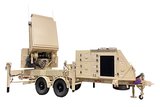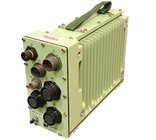US hypersonic weapons trail those of competitors
The USAF launched its AGM-183A Air-launched Rapid Response Weapon (AARW) programme in 2018. (Lockheed Martin)
The Congressional Research Service (CRS) has cautioned that Chinese and Russian recent advances in hypersonic missile technology may tempt them to challenge the US in contested regions, potentially circumscribing allies’ manoeuvre space and spheres of influence.
CRS, citing experts, noted this important because Russia’s hypersonic missiles became operational in December 2019 and China’s last year. The US, conversely, is not expected to field any until 2022-23 at the earliest.
This strategic imbalance is concentrating minds stateside and abroad. Peer competitors’ hypersonic missiles are far more dangerous and roughly seven times faster than ballistic missiles.
The weapons are also manoeuvrable in
Already have an account? Log in
Want to keep reading this article?
More from AUSA 2021 News
-
![New ruggedised computer caters for extreme environments]()
New ruggedised computer caters for extreme environments
Sidewinder-Byte has a ruggedised modular/open architecture design compliant with MOSA standards and an unlimited deployment capability.
-
![AUSA 2021: Hanwha Defense eyes US market]()
AUSA 2021: Hanwha Defense eyes US market
South Korean firm Hanwha Defense is keen to team up with US suppliers as a means of accessing DoD procurement programmes.
-
![AUSA 2021: Ultra presents new RAIN information system]()
AUSA 2021: Ultra presents new RAIN information system
RAIN delivers faster information flow to troops and a beta version is set for release, says Ultra.
-
![AUSA 2021: UVision signs cooperation agreement to support HERO in US]()
AUSA 2021: UVision signs cooperation agreement to support HERO in US
UVision and MAG Aerospace will provide operational and training solutions for HERO Loitering Munitions.
-
![AUSA 2021: Raytheon lifts the veil on GhostEye MR]()
AUSA 2021: Raytheon lifts the veil on GhostEye MR
New radar uses LTAMDS technology developed for the US Army.
-
![AUSA 2021 - Curtiss-Wright introduces new open architecture solutions]()
AUSA 2021 - Curtiss-Wright introduces new open architecture solutions
Curtiss-Wright has developed systems that comply with US Army modular open standards.

























